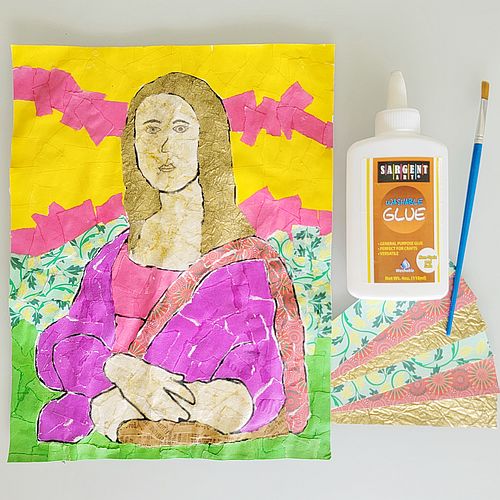Everyone is an artist—including your child! That’s why studying some of the most famous artists in the world can guide us and inspire us in creating our own art. Plus, learning about these people gives us a glimpse into history, culture, and popular art movements. This list includes several well-known artists, but we’ve suggested a couple that might be new to you and your children, too. There’s something for everyone!

You might also like these!
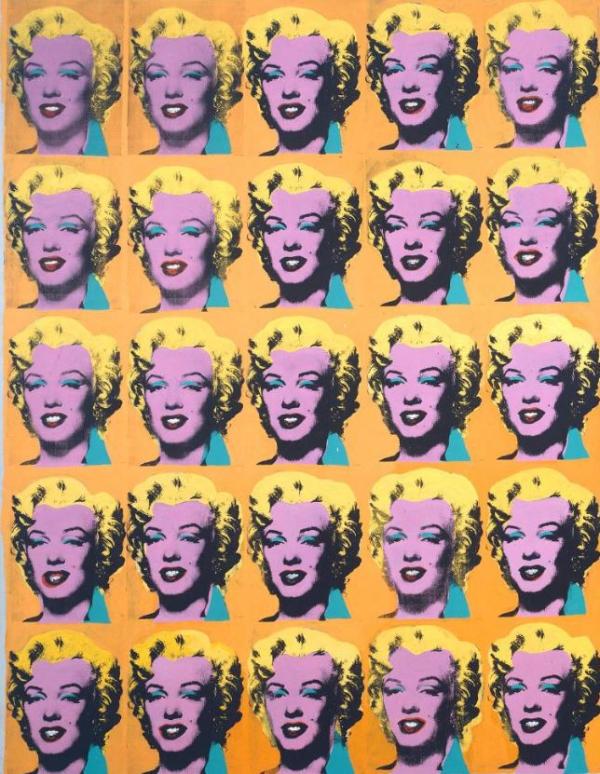
Who was Andy Warhol?
Andy Warhol (1928-1987) was born in Pittsburg, Pennsylvania. He became very ill when he was just eight years old and couldn’t leave his bed. His mother, who was an artist herself, gave him his first drawing lessons during this time. A year later, when he was recovered, Warhol also took up photography. He studied art throughout his childhood and studied design in college. He began his career in commercial art by illustrating advertisements for a magazine. In 1961, he launched the Pop Art style. These were bold pieces of art that took everyday products and put them in the spotlight. For example, he created art featuring soda bottles, soup cans, and vacuum cleaners. He also painted portraits of famous people like Marilyn Monroe and Elvis. He went on to publish books and produce films. He suffered from a gallbladder illness and passed away suddenly in 1987.
Why is Warhol’s art famous?
Andy Warhol’s art was focused on items from pop culture like celebrities and consumer goods. Warhol himself was famous for his white hair and bold personal style.
Marilyn Diptych (1962)
This painting was created shortly after Marilyn Monroe, a famous celebrity, died. Diptych means that the art was made up of two pieces. One piece was brightly colored while the other was black and white. Both sides feature 25 silkscreen prints of a photograph of Marilyn.
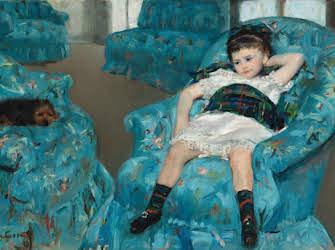
Who was Mary Cassatt?
Mary Cassatt (1844-1926) was born near Pittsburgh, Pennsylvania. When she was 21 years old, she traveled to Paris in order to take art lessons. Just a few years later, one of her paintings was exhibited at the Paris Salon. She continued to study in Philadelphia, Italy, Spain, Belgium, and Holland. In 1877, she was invited to join the Impressionists. This was a group of artists who tended to paint everyday people, giving attention to spontaneous scenes and focusing on light. They wanted to capture the feeling of the scene instead of recreating the specific reality. After 1879, she experimented with printmaking and etching. Unfortunately, Cassatt began to go blind in the early 1900s and by 1915, she had stopped creating art.
Why is Cassatt’s art famous?
Mary Cassatt was the only American to ever exhibit with the Impressionists. Her paintings featuring the experience of women—things like taking care of children, knitting, reading, and having tea— were particularly popular.
Little Girl in a Blue Armchair (1878)
This oil painting was part of Cassatt’s first exhibition with the Impressionists. In it, a little girl slumps in a chair, bored and out of place amidst all of the fancy furniture. The painting recreates the feeling of how children often have to hold in their energy and emotions when they’re in the adult world.
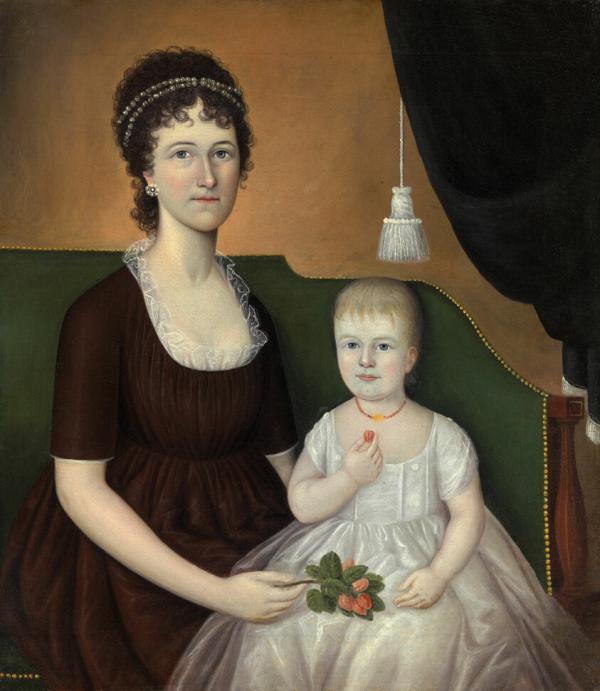
Who was Joshua Johnson?
Joshua Johnson was born sometime around 1763 in Baltimore, Maryland. The exact date is not known because he was born into slavery. Not much is known about his childhood, but he did become a free man in 1782. He first completed an apprenticeship with a blacksmith. However, in 1796, he was listed in the city directory as a portrait painter. There is some evidence that suggests he also decorated furniture. He moved around the Baltimore area frequently and painted as many as 83 portraits. Because he was a master at using painting methods that were popular at that time, many believe that he was formally trained by some other artists. These portraits usually featured white people with a stiff look and straightforward gazes. The people were often seated on small sofas decorated with brass tacks. There is no record of Johnson after 1827. Johnson’s legacy was lost until a Baltimore historian began researching his work in 1939.
Why is Johnson’s art famous?
Joshua Johnson was the earliest recorded African-American artist who worked professionally in the United States.
Elizabeth Grant Bankson Beatty (Mrs. James Beatty) and Her Daughter Susan (1805)
This portrait of a mother and daughter was completed by Jonhson in his typical style. The subjects look very formal and are painted against a relatively plain background.
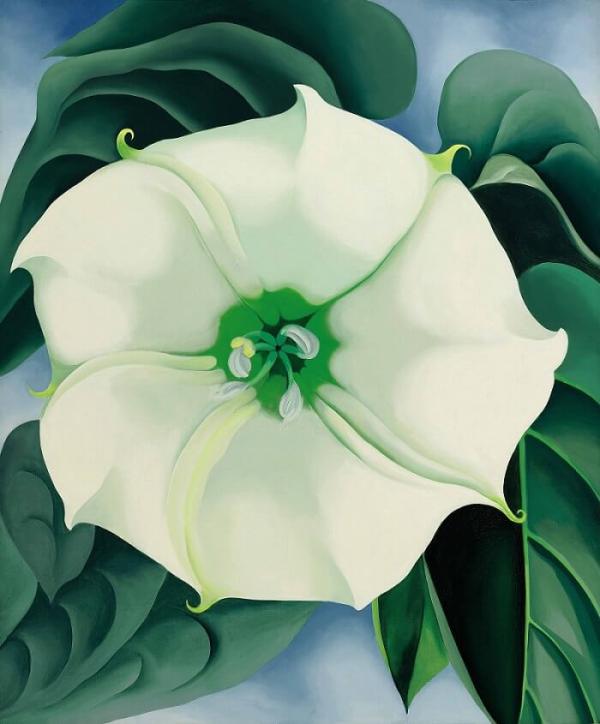
Who was Georgia O’Keeffe?
Georgia O’Keeffe (1887-1986) was born on a farm in Wisconsin. When she was 17, she began attending the Art Institute of Chicago. The typical style in her art classes was reproducing work of the Masters, but she didn’t feel a personal connection to this type of painting. It was then that she turned to abstract painting. She took things from nature, like clouds and waves, and began to paint them as abstract shapes. In 1916, a friend mailed some of O’Keeffe’s abstract charcoal drawings to a gallery owner. He exhibited her drawings, and O’Keeffe had her first solo exhibition in 1917. In the years that followed, O’Keeffe painted skyscrapers. She also painted large-scale, detailed close-ups of flowers. In many of her pieces, the scale of the flower is changed so much that it almost appears abstract. In the early 1930s, O’Keeffe began painting rich desert landscapes in New Mexico. She continued to paint until she passed away at the age of 98.
Why is O’Keeffe’s art famous?
Georgia O’Keeffe has been nicknamed “the mother of American modernism.” Her early work helped introduce America to abstract art, and her iconic flower paintings presented a totally new perspective.
Jimson Weed, White Flower No. 1 (1932)
This piece is a great example of Georgia O’Keeffe’s style of painting flowers. The flower bloom is magnified so that viewers can see the rich details. In 2014, the painting sold for $44.4 million at auction.
That was the highest price ever paid for a work of art created by a woman.
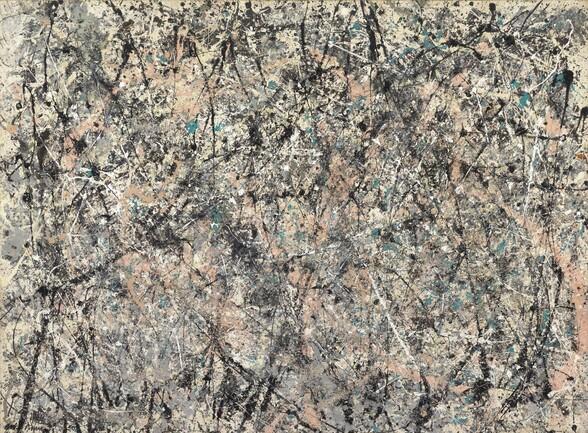
Who was Jackson Pollock?
Jackson Pollock (1912-1956) was born in Cody, Wyoming, but his family lived in several places during his childhood. They eventually settled in Los Angeles. While he was in high school there, Pollock received his first type of art training. He moved to New York City in 1930 and continued to study art. As the Great Depression hit, Pollock worked as an easel painter in the WPA Federal Art Project. He painted small landscapes during this time. By 1938, his work had become semi-abstract, and he sometimes used Surrealist techniques. In 1943, he was hired by an art gallery in New York City and exhibited there. It wasn’t until 1947 that Pollock began using his paint-pouring method. He would lay a canvas flat on his floor and fling or drip thinned paint onto it. The style became known as Abstract Expressionism and was defined by this “action painting.” These incredibly large works were spontaneous and expressed personal values and ideas. In the early 1950s, Pollock’s work became darker as he began painting in black and white. Unfortunately, Pollock suffered from mental illness and alcoholism. He died in a car crash in 1956.
Why is Pollock’s art famous?
Jackson Pollock created a new form of abstract painting through his methods of drip and splatter painting. His art led the Abstract Expressionism movement in the years that followed World War II.
Number 1, 1950
This piece features lines and splatters of pink, teal, gray, black, and white house paint. He “signed” the painting by leaving white handprints in the upper corners of the canvas.
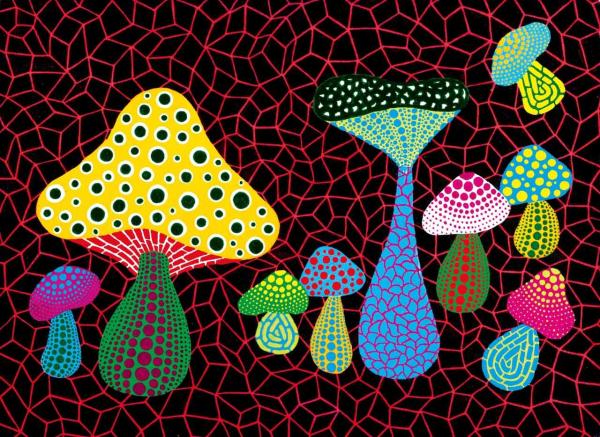
Who is Yayoi Kusama?
Yayoi Kusama was born in 1929 in Matsumoto, Japan. Even though her parents didn’t want her to be an artist, Kusama was persistent. Her mom wouldn’t buy her art supplies, so Kusama made art from mud and old sacks! However, when she was 19, she traveled to Kyoto to study traditional Japanese painting. She also experimented with abstract techniques. She held her first solo exhibition in 1952 in Japan. In 1958, she moved to New York City and had her first art exhibit there in 1959. This is when she began creating “infinity net” paintings. This involved making thousands of tiny marks across a very large canvas and those marks looked as if they continued forever, into infinity. Her signature style of polka dots evolved from there. Kusama was a major female artist in the 1960s and beyond as she worked within the Pop Art and Minimalism art movements. She has held several prestigious shows in recent decades. In 1993, she became the first woman to represent Japan at the Venice Biennale, an international art exhibition. Just this year, she revealed a large mosaic she created in Grand Central Station in New York City. It’s titled A Message of Love, Directly from My Heart unto the Universe.
Why is Kusama’s art famous?
Kusama has been referred to as “the princess of polka dots.” The creativity she’s displayed with these dots and markings have made her work famous in paintings, performances, fashion, and other arts.
This piece feature her signature bright colors and vibrant dots. The dots make up the mushroom, while the background is a contrasting black with a light red pattern.
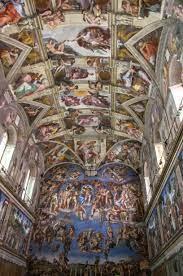
Who was Michelangelo?
Michelangelo (1475-1564) was born in Italy. As a child, he wasn’t very interested in school. Instead, he liked to spend his time watching painters working at nearby churches and drawing what he saw. When he was 13 years old, Michelangelo began serving as an apprentice in a painter’s workshop. That’s where he learned the fresco technique—applying paint directly on wet plaster in order to paint a mural. After just a year, he was sent to the Medici family, one of the most powerful families in Florence at the time. He studied sculpture there until 1492. When he was just 16 years old, he was already creating beautiful sculptures that people still admire today. In 1498, Michelangelo moved to Rome. He created a few religious statues while he was there, but his most famous project was decorating the ceiling of the Sistine Chapel. He painted more than 300 figures without the help of anybody else. Later in life, Michelangelo also worked on architecture. He died in 1564 when he was 88 years old.
Why is Michelangelo’s art famous?
During the Italian Renaissance, Michelangelo emerged as an artist with many talents—painting, sculpting, and designing buildings. His work is praised for being complex and for its ability to bring physical realities and emotions to life.
The Ceiling of the Sistine Chapel (1508-1512)
This 5,000 square foot masterpiece was created by Michelangelo over the course of four years. He was hired by the Pope—a huge honor—to paint the ceiling with scenes from the Old Testament of the Bible. He utilized the fresco technique for most of it. Because he was painting on the ceiling, the work was very difficult and cramped. In fact, Michelangelo didn’t really want to do the project. However, it’s become one of the most famous works of art in the entire world!

Who was Augusta Savage?
Augusta Savage was born in Florida in 1892. She enjoyed art from a young age, but from 1915 to 1919, her family was very strongly opposed to her art and clay was so scarce that Savage didn’t do any work. However, she was able to get her hands on clay in 1919 and was inspired to move to Jacksonville, Florida, to pursue art. Things were difficult there, so she later moved to New York City. She made busts of several prominent people. One of her busts earned her a fellowship in Paris. While she studied there, her work was shown, and she received another fellowship and a grant to travel across Europe. She returned to New York City in the 1930s to work as a sculptor and an art teacher in Harlem. Through the Harlem Community Art Center, she was able to inspire the careers of many African-American artists. In 1937, she was hired to create a sculpture for the New York World’s Fair. Two years later, she opened the Salon of Contemporary Negro Art, a small gallery, but it closed soon after due to lack of money. Throughout her career, Savage had been an advocate for civil rights and women’s rights, but by 1945, she had become discouraged and moved upstate to Saugerties, New York. She didn’t make much art after that. She died in 1962 after a battle with cancer.
Why is Savage’s art famous?
Augusta Savage overcame numerous financial and racial barriers as she created sculptures, taught students in Harlem, and fought for racial equality.
This 16-foot sculpture was exhibited at the 1939 New York World’s Fair. It depicted 12 black singers that gradually got taller and formed the strings of a harp. The arm of God served as the sounding board.
Savage was inspired by a song from 1900: “Lift Every Voice and Sing.” Unfortunately there wasn’t any money available to store or preserve the sculpture, so it was destroyed after the fair ended.
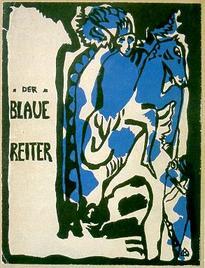
Who was Wassily Kandinsky?
Wassily Kandinsky (1866-1944) was born in Russia. His parents were very musical. Wassily himself began to play the piano and cello as a small child. He also took drawing lessons. However, his family wanted him to become a lawyer, so he originally followed that career path. He maintained his interest in art even as he worked as a lawyer. Then, in 1895, he saw a French Impressionist exhibition that rekindled his passion for art. In 1896, he quit his work as a lawyer and moved to Germany to become a full-time artist. He was especially interested in color. During World War I, he moved back to Russia and continued to study and paint. His work became more abstract and focused on symbolic associations. His goal was to communicate human emotion through his paintings, especially through color. Music and spirituality played an important role in his artistic inspiration. Due to political tensions, Kandinsky moved a few more times during this life. He eventually settled in France. He died there in 1944.
Why is Kandinsky’s art famous?
Kandinsky was a pioneer of abstract art. While other artists were copying what they saw, he was creating pieces with geometric forms and colors that spoke to the viewers.
Der Blaue Reiter (1903)
The name of this painting translates to “the blue rider.” This was a breakthrough painting for Kandinsky. In it, the rider and horse are a bit hazy, but they’re clearly the focus. The light and dark colors are expertly contrasted, and signs of his abstract style are seen throughout the piece.
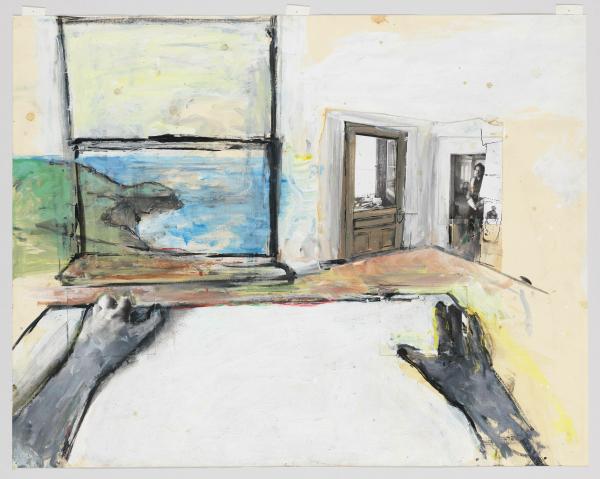
Who is June Leaf?
June Leaf was born in Chicago in 1929. She briefly studied art at the Institute of Design in Chicago from 1947-1948. After that, she studied art education at Roosevelt University. Her first exhibition was held in 1948 and her next move was to Paris. While there, she was inspired by the work of Paul Klee and Mark Tobey. She painted abstract pieces and drawings that featured patterns. After she arrived back in the U.S., her art was influenced more by Surrealism and figurative art, a style that uses the human figure but distorts it or alters it in some way. Her work was being widely shown and collected at this point. In her later years, she’s been splitting her time between New York City and a home in a remote area of Nova Scotia. She’s also jumped into a new medium: kinetic sculptures made from metal. Leaf’s style of working is very unique. Instead of focusing on one thing at a time, she moves around her studio to work on painting, drawing, and sculpture simultaneously.
Why is Leaf’s art famous?
June Leaf is a contemporary artist who creates pieces that tell stories, often about relationships. Her art often features symbolism and allegory, using symbols to tell a story that holds a deeper meaning.
This piece features pen and ink along with acrylic paint. It’s an example of Leaf’s use of Surrealism with a unique perspective that tells a story.

Who was Pablo Picasso?
Pablo Picasso (1881-1973) was born in Malaga, Spain, and spent his teenage years in Barcelona and Madrid. However, he lived most of his life in Paris. He showed remarkable artistic talent from an early age. This was especially true when it came to drawing. He experimented with several artistic styles during his career. In 1907, he debuted a major new style called Cubism. This type of art is identified by the use of geometric shapes and abstract forms. Later, in 1912, he came up with another new style called Collage. This type of art involves attaching pieces of cloth or other papers to the canvas. In the late 1920s, he began experimenting with Surrealism, a style of art that depicts fantasy and dreams. He continued to create art until he passed away at the age of 91.
Why is Picasso’s art famous?
Pablo Picasso wasn’t satisfied with classical styles or methods the artists before him had used. He was a brave creative who invented new styles. He applied his methods to a variety of mediums like ceramics, paintings, and sculptures.
This incredibly large oil painting was created in response to the Spanish Civil War in Guernica, Spain. Picasso used a Surrealist style and muted colors in order to communicate the horrors of war and the tragedy of what happened in Guernica.
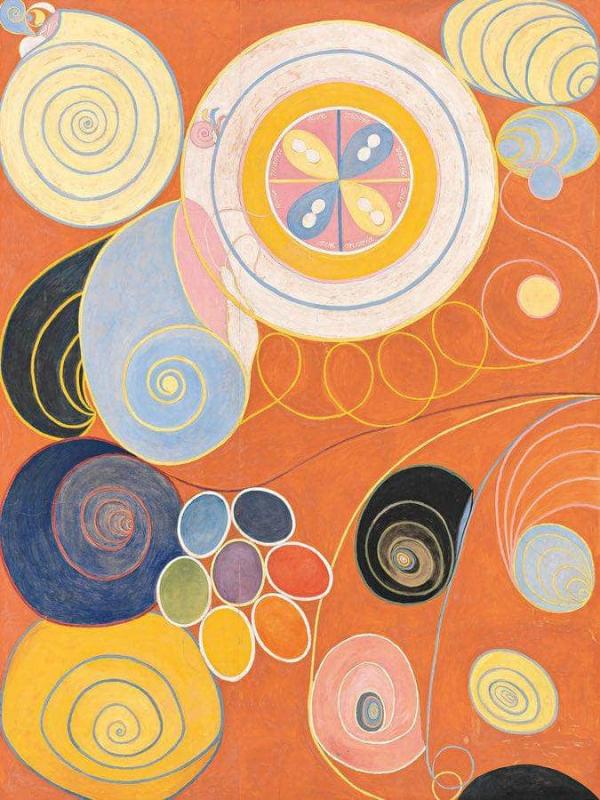
Who was Hilma af Klint?
Hilma af Klint was born in 1862 in Stockholm, Sweden. In 1882, she became part of the first class of women to ever attend the Royal Academy of Fine Arts in Stockholm. After graduating in 1887, she began her artistic career in a very traditional way by painting landscapes and botanical scenes. However, in 1906, she began creating bold, colorful abstract art. This was inspired by Hilma’s spiritual side. She was very passionate about communicating with the spiritual world and believed that it was the spirits who were asking her to create these specific pieces of art. Between 1906 and 1915, she painted 193 pieces as the Painting for the Temple series. She completed her final painting in 1941. When she died in 1944, a message was found in one of her notebooks that stated she didn’t want her paintings shown until 20 years after her death and that none of her paintings should ever be sold. Her wish was honored and her art remained a mystery until its first unveiling in 1986.
Why is Hilma af Klint’s art famous?
Hilma af Klint created thousands of pieces in a style that the world had never seen before: abstract art. But nearly 80 years passed before her work was formally shown to the public. In 1986, her work was featured for the first time in a public art show, and she slowly became known as the true founder of abstract art.
Group IV, No. 3. The Ten Largest, Youth (1907)
This painting is part of a series from Hilma called The Ten Largest. It consisted of 10 brightly colored abstract paintings that were approximately 10 feet tall and 8 feet wide. Each one represented a stage of life, from childhood to old age.





